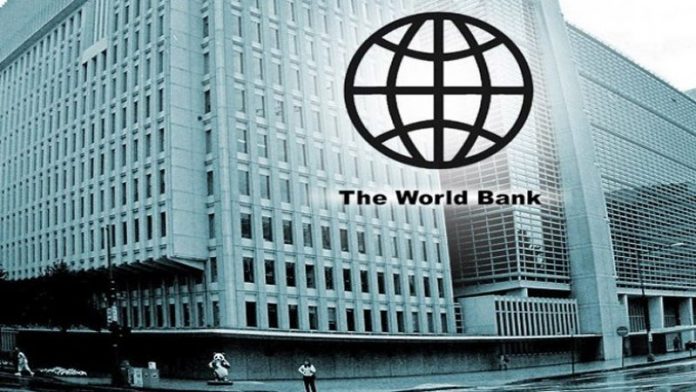Pakistan’s poverty rate to ease in FY22: World Bank


The World Bank has set the extreme poverty line at $1.9 per person per day, however since 2017, the World Bank has also been reporting poverty rates for all the countries using two new international poverty lines, a lower middle-income International Poverty Line, set at $3.20 per day, and an upper middle-income International Poverty Line, set at $5.50 per day. According to a recent report released by the Bank, Pakistan’s lower middle-income poverty rate would also decline from the current 37pc to 35.7pc in FY22 and 33.8pc in FY 2022-23.
Similarly, the upper middle-income poverty rate has also been projected to ease from 77pc to 76.2pc in FY22 and 75pc in the next fiscal year.
In comparison, the poverty rate in other regional countries is much higher than that in Pakistan.
The World Bank report titled “Shifting Gears: Digitization and Services-Led Development” noted that the international or extreme poverty rate in Bangladesh was 12.5pc which would ease to 11.9pc in the next fiscal year.
Similarly, lower middle-income poverty rate and upper middle-income poverty rate in the country is 48.9pc and 82.1pc respectively.
In India, the report added that the extreme poverty rate is 22.5pc compared to 4.4pc in Pakistan.
The lower middle-income poverty rate in India is 61.7pc, the report added.
Likewise, Nepal’s international poverty rate is 15pc while its lower middle-income and upper middle-income poverty rate is 50.9pc and 83pc respectively.
While in Sri Lanka the international poverty rate is 0.9pc and the lower middle-income and upper middle-income poverty rate is 11pc and 42pc respectively.
With respect to overall economic outlook of Pakistan, the report added that the output growth is projected to ease to 3.4 percent in FY22, but strengthen thereafter to 4 percent in FY23 with the implementation of key structural reforms, particularly those aimed at sustaining macroeconomic stability, increasing competitiveness and improving financial viability of the energy sector.
Inflation is projected to edge up in FY22 with expected domestic energy tariff hikes and higher oil and commodity prices before moderating in FY23.
Poverty is expected to continue declining, reaching 4.0 percent by FY23.
The current account deficit is projected to widen to 2.5 percent of GDP in FY23 as imports expand with higher economic growth and oil prices.
Exports are also expected to grow strongly after initially tapering in FY22, as tariff reform measures gain traction supporting export competitiveness.
In addition, the growth of official remittance inflows is expected to moderate after benefiting from a COVID-19 induced transition to formal channels in FY21.
Recent Posts
- Pakistan
Pakistan’s nuclear assets secure, ready to deter threats: Kundi
Khyber Pakhtunkhwa (KP) Governor Faisal Karim Kundi has emphasized that the nation stands firmly alongside…
- Pakistan
NAB chairman visits Lahore bureau, reviews major operations
Chairman NAB, Lt. Gen (R) Nazir Ahmed, paid an important visit to the NAB Lahore…
- Pakistan
Larger-sized India suffers from insecurity syndrome, blames neighbour for own shortcomings: Ahsan
Minister for Planning, Development and Special Initiatives Professor Ahsan Iqbal on Saturday said that India,…
- Pakistan
Turkish Amb celebrates ‘National Sovereignty & Children’s Day’
Ambassador of Türkiye to Pakistan, Dr. Irfan Neziroglu, on Saturday underscored the historical significance of…
- Pakistan
Daducha dam to boost Rawalpindi’s water supply
Punjab’s Parliamentary Secretary Housing, Urban Development and Public Health Engineering Department Sultan Bajwa on the…
- Pakistan
Real-Time Reform: Punjab moves toward data-driven governance through digital M&E
In a transformative leap towards digitization and data-driven governance, the Punjab Government has quietly but…
Leave a Comment